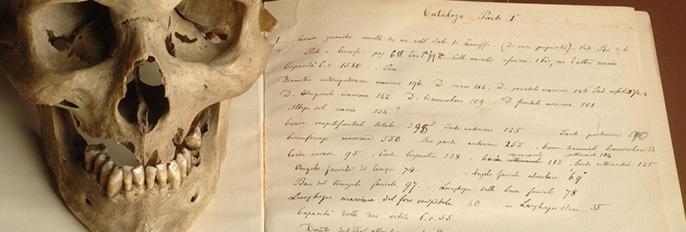Anthropological Collections

The skeletal remains of Homo Sapiens are housed in these collections: they are an absolute richness for their number and rarity. Among the over 3,000 skulls and more than 100 skeletons, notable are the finds of populations of Tierra del Fuego that have been extinct for over a century and of which there are only 4 other collections in the world (Punta Arenas - Chile, Vienna, Paris and Rome).
The cranial collections are divided by geographical areas, with a room dedicated to Italian collections further divided by regions and provinces.
The skull is certainly the part of our skeleton that holds the deepest traces of humanity, it is the home of our brain, it is the vault under which the passions burn and the thought are stirred. (Paolo Mantegazza)
Finally, the presence in the museum of skeletal remains and plaster casts of Primates (in the primates collections) indicates Mantegazza's idea of an anthropology such as "Natural History of Man".
Learn more on the anthropological collections (English text at the bottom of the pages)
Moggi, J., The Anthropological Collections (extract), in: Moggi, J., Stanyon, R. (eds), 2014. "The Museum of Natural History of the University of Florence. Vol. 5, The Anthropological and Ethnological Collections", Firenze University Press (pp. 182-192)
Last update
07.09.2021
